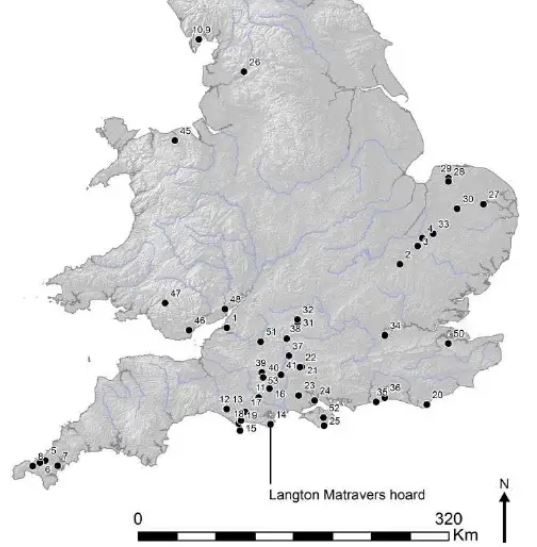The discovery of 373 intact and broken tin-bronze socketed axes accompanied by 404 fragments in four pits at Langton Matravers collectively represents one of the largest hoards found to date in prehistoric Britain and Ireland.
So far so good. Were they any good, these axes?
They were very probably never meant to be used as axes as the very high levels of tin they contain would have made them brittle. Many were poorly finished, with the majority still containing their casting cores.
Oh. Seems strange, were these early axes? From when they were still figuring out how much tin to use?
The axes are typologically dated to the Llyn Fawr metalwork phase (c.800–600 BC) and span the Bronze Age/Iron Age transition, when the production, circulation and deposition of bronze appear to have been substantially reduced throughout north-west Europe.
Oh. Even stranger, the later the axes are made, the worse they are as axes. I've read the article twice, but can't find if the authors come up with any convincing explanation. If I understand their academic wanderings correctly, they are suggesting the trade in axes as a commodity collapsed, and they were dumped wholesale as scrap metal.
There is, however, one map in the article (of known hoard locations) that may be more relevant to TME than it is to them.

Ref : page 372 of the article, with numbered locations:
Finds of Llyn Fawr metalwork in Britain (after O’Connor 2007, Boughton submitted).1. King’s Weston Down (Bristol); 2. Bassingbourn (Cambridgeshire); 3. Quy Fen (Cambridgeshire); 4. Wicken Fen(Cambridgeshire); 5. Carn Brea (Cornwall); 6. Higher Roseworthy (Cornwall); 7. Mylor (Cornwall); 8. St Erth(Cornwall); 9. Skelmore Heads, Urswick (Cumbria); 10. ‘Ulverston’ (Cumbria); 11. Blandford (Dorset); 12.Eggardon Hill I (Dorset); 13. Eggardon Hill II (Dorset); 14. Langton Matravers (Dorset); 15. Portland (Dorset); 16.Thorney Down (Sixpenny Handley); 17. Puddleton (Dorset); 18. Weymouth (Dorset); 19. Preston Down, nrWeymouth (Dorset); 20. Terminus Rd, Eastbourne (East Sussex); 21. Danebury (Hampshire); 22. Nether Wallop(Hampshire); 23. New Forest (Hampshire); 24. nr Southampton (Hampshire); 25. Steephill, Ventnor (Isle of White);26. R Ribble, Clitheroe (Lancashire); 27. Cringleford (Norfolk); 28. East Rudham (Norfolk); 29. Syderstone(Norfolk); 30. Watton (Norfolk); 31. Tower Hill (Oxfordshire); 32. Compton Beauchamp (Oxfordshire); 33. WestRow, Mildenhall (Suffolk); 34. R. Thames, Kingston (Surrey); 35. Ferring (Sussex); 36. Sompting (Sussex); 37.Figheldean Down (Wiltshire); 38. Manton Copse (Wiltshire); 39. Hindon (Wiltshire); 40. Vale of Wardour(Wiltshire); 41. Salisbury, Netherhampton (Wiltshire); 42. Tillicoultry (Clackmannanshire); 43. La Mancha(Peeblesshire); 44. Poolewe, Gairloch (Ross & Cromarty); 45. Plas-yn-cefn (Denbighshire); 46. Cardiff II, Leckwith(Glamorgan); 47. Llyn Fawr, Rhigos (Glamorgan); 48. Chapel Hill, Tintern (Monmouth); 49. ‘South-West England’Group (not mapped); 50. Stockbury (Kent); 51. Melksham (Wiltshire); 52. Arreton (Isle of Wight); 53.Tisbury (Wiltshire)
Besides the obvious cluster in the Dorset & Wiltshire area (on routes still travelled), the outlying clusters reveal their own story. Either on the Greater Ridgeway heading towards Doggerland, or near ports and harbours.
Article Ref:
https://www.academia.edu/7567910/Collap ... ers_Dorset
